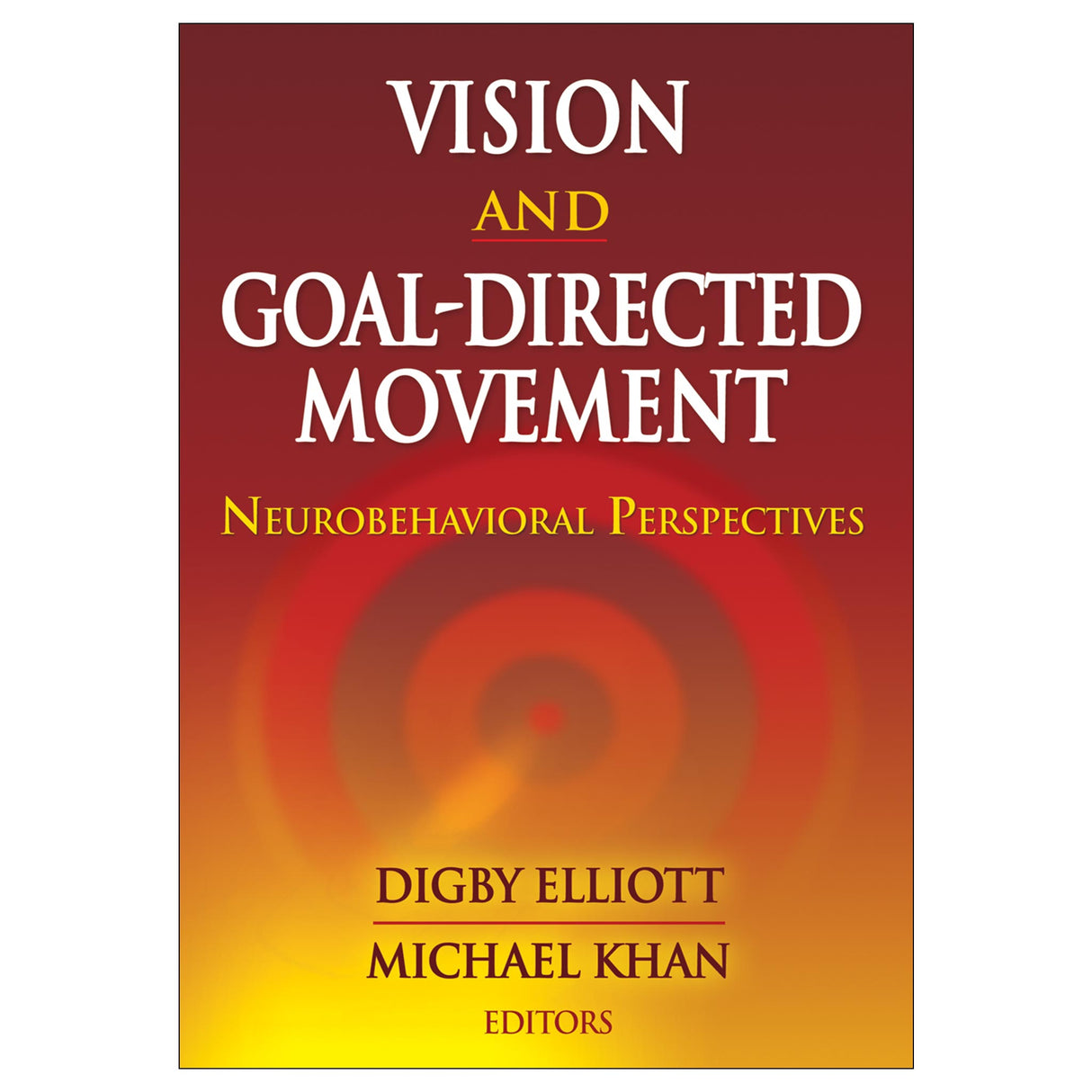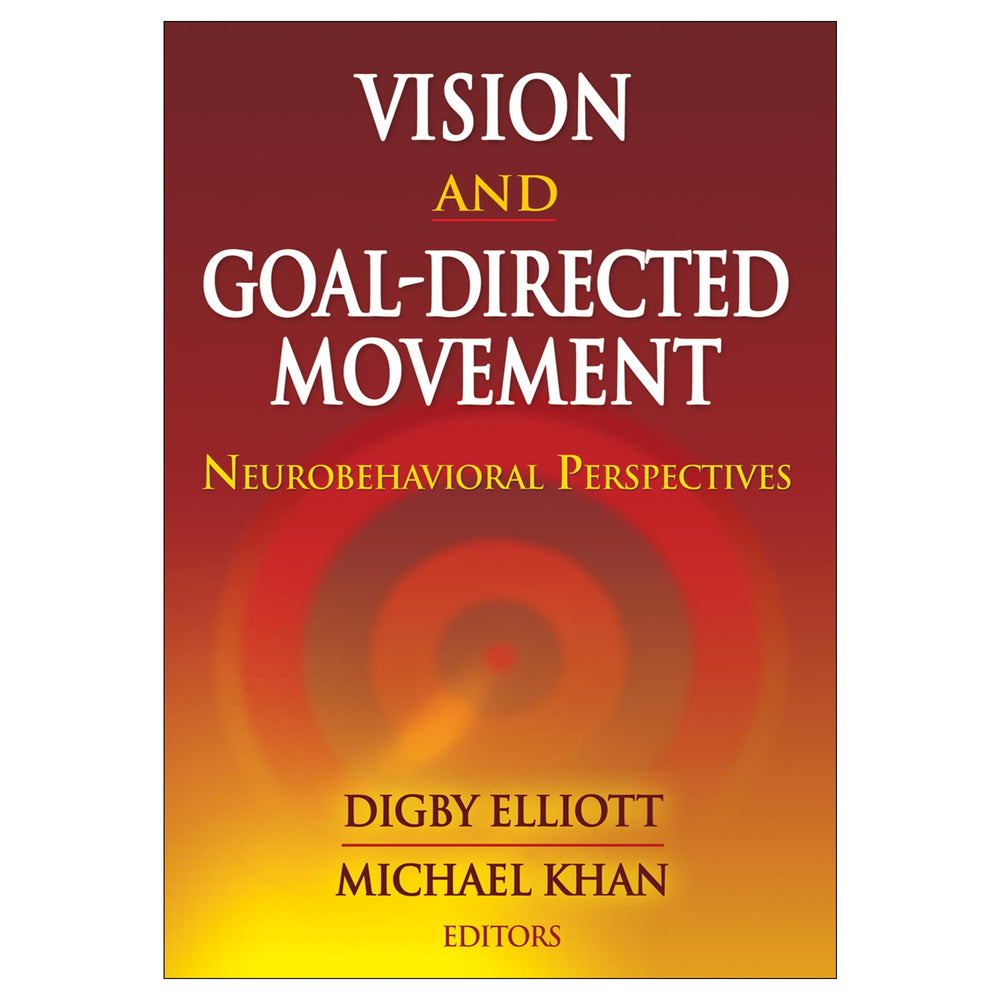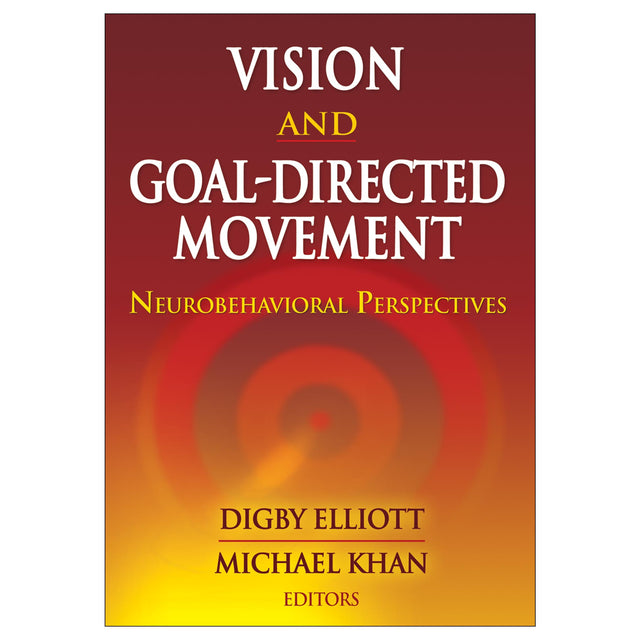Vision and Goal-Directed Movement PDF
Neurobehavioral Perspectives
Author: Digby Elliott
$93.95 CAD
Access Duration: 10 Years
Vision and Goal-Directed Movement: Neurobehavioral Perspectives is also available as an e-book. The e-book is available at a reduced price and allows readers to highlight and take notes throughout the text. When purchased through the Human Kinetics Web site, access to the e-book is immediately granted when the order is received.
To interact with the environment, an individual must code, store, and translate spatial information into the appropriate motor commands for achieving an outcome. Working from this premise, Vision and Goal-Directed Movement: Neurobehavioral Perspectives discusses how visual perception, attention, and memory are linked to the processes of movement preparation and execution.
With contributions from active researchers in movement science, Vision and Goal-Directed Movement presents the latest theories on the utilization of vision in goal-directed movement control. As a resource for motor control and motor learning researchers, students, educators, and clinicians, Vision and Goal-Directed Movement offers the following:
• Comprehensive coverage of current behavior-based literature on the visual control of goal-directed movement
• A systematic explication of the sensory and physiological processes and systems responsible for fast, accurate, and efficient performance
• A solid foundation for further study of the sensory and neural systems responsible for precise goal-directed behavior
• A discussion of how current research on vision and goal-directed movement can assist in creating efficient and safe work environments
Using research informed by neural imaging and magnetic brain stimulation, this text provides readers with a better understanding of the neural foundations for goal-directed movement, illustrates the flexibility of the human visuomotor system, and discusses how regulation of movements depends on the learning and developmental history of the performer. It begins by reviewing the works of R.S. Woodworth and the influence of his theories on current research. The majority of the chapters in the first section of the book take a behavioral and process-oriented approach to exploring goal-directed movement. The text then explores the sensory and neural foundations for goal-directed action, including issues related to both pursuit and saccadic eye movements as well as discussion of the specialization of various cortical systems for the regulation of movement. Especially relevant to professionals and scientists concerned with skill instruction and rehabilitation, the final part of the text provides a review of recent research on how and why limb control changes occur with practice and development. In addition, Vision and Goal-Directed Movement considers how the research presented can maximize precision, efficiency, and safety in workspace design.
Vision and Goal-Directed Movement: Neurobehavioral Perspectives adds a unique offering to the literature base for motor behavior, demonstrating how advances in both behavioral and neurophysiological methods can inform theories related to the biological systems contributing to skilled performance.
Part I. A Behavioral Approach to Vision and Goal-Directed Movement
Chapter 1. The Legacy of R.S. Woodworth: The Two Component Model Revisited Digby Elliott, Steve Hansen, and Lawrence E.M. Grierson
The Early Two-Component Model
Alternative Explanations of Speed–Accuracy Relationships
The Optimized Submovement Model
Kinematic Evidence for Current Control
How Ballistic Is the Initial Adjustment?
Two Types of Current Control
The Two-Component Model Revisited
Future Directions
Chapter 2. The Optimization of Speed, Accuracy and Energy in Goal-Directed Aiming Digby Elliott, Steve Hansen, and Michael A. Khan
Practice and Goal-Directed Aiming
Individual Aiming Trajectories
Within-Performer Spatial Variability
Do Early Events Predict Late Events?
Lessons From the Serial Reaction Time Literature
Optimizing Energy Expenditure and the Cost of an Error
Conclusions and Future Directions
Chapter 3. Visual Selective Attention and Action
Timothy N. Welsh and Daniel J. Weeks
Attention
Action-Centered Selective Attention
Summary and Future Directions
Chapter 4. Vision and Movement Planning
J. Greg Anson, Rachel Burgess, and Rebekah L. Scott
Two Visual Systems
Vision and Movement Planning: Behavioral Perspectives
Vision and Movement Planning in Nonhuman Primates
Vision, Movement Planning, and Memory
Memory-Guided Reaching
Memory Mechanisms and Planning
Precuing, Memory, and Movement Planning
Summary and Future Directions
Chapter 5. Memory-Guided Reaching: What the Visuomotor System Knows and How Long It Knows It
Matthew Heath, Kristina A. Neely, Olav Krigolson, and Gordon Binsted
The Temporal Durability of Stored Target Information
Visual Awareness and the Evocation of Visually Guided and Memory-Guided Reaches
Visual Coordinates or a Fully Specified Movement Plan
Memory-Guided Reaches and the Relationship Between End-Point Error and Corticomotor Potentials
Conclusions and Future Directions
Chapter 6. The Preparation and Control of Multiple-Target Aiming Movements
Michael A. Khan, Werner F. Helsen, and Ian M. Franks
The Influence of Response Complexity on Reaction Time
Online Programming Hypothesis
Movement Integration
Planning and Movement Integration
Future Directions
Chapter 7. Rapid Regulation of Limb Trajectories: Response to Perturbation
Steve Hansen, Lawrence E.M. Grierson, Michael A. Khan, and Digby Elliott
Visual Occlusion
Physically Changing the Target
Visual Illusions
Changing the Visual Context
Deceiving the Control Processes
Online Perturbations
Manipulating Certainty of the Visual Environment
Future Directions
Chapter 8. Visual Field Asymmetries in the Control of Target-Directed Movements
Michael A. Khan and Gordon Binsted
Peripheral Vision Versus Central Vision
Upper Visual Field Versus Lower Visual Field
Conclusions and Future Directions
Part II. Sensory and Neural Systems for Vision and Action
Chapter 9. Prediction in Ocular Pursuit
Simon J. Bennett and Graham R. Barnes
Gaze-Orienting Eye Movements
Prediction in Ocular Pursuit
Anticipatory Smooth Pursuit Onset
Anticipatory Smooth Pursuit During Transient Occlusion
Predictive Smooth Pursuit During Transient Occlusion
Coordination Between Smooth Pursuit and Saccades
Model of Ocular Pursuit
Neural Pathways for Ocular Pursuit
Neural Pathways for Ocular Pursuit During Transient Occlusion
Pursuit Against a Background: Suppression of the Optokinetic Reflex
Oculomanual Pursuit
Summary and Future Directions
Chapter 10. Oculomotor Contributions to Reaching: Close Is Good Enough
Gordon Binsted, Kyle Brownell, Tyler Rolheiser, and Matthew Heath
Common Anatomies, Divergent Functions
Eye–Hand Coupling Behavior
Frames of Reference Hypothesis
Common Command Hypothesis
Afferent Information Hypothesis
Strategy Hypothesis
Conclusions: Close Is Good Enough
Future Directions
Chapter 11. Eye–Hand Coordination in Goal-Directed Action: Normal and Pathological Functioning
Werner F. Helsen, Peter Feys, Elke Heremans, and Ann Lavrysen
Retinal Versus Extraretinal Information
Visuomotor Control in Normal Functioning
Summary of Visuomotor Control in Normal Functioning
Visuomotor Control in Cerebellar Pathology
Summary of Visuomotor Control in Cerebellar Pathology
Conclusions and Future Directions
Chapter 12. Lateralization of Goal-Directed Movement
Robert L. Sainburg
Neural Lateralization
Motor Lateralization
Biological Correlates of Handedness
Neurobehavioral Processes Lateralized in Handedness
Conclusions
Future Directions
Chapter 13. Visual Illusions and Action
David A. Westwood
Historical Context: Perception and Action
Visual Illusions as a Tool for Studying Perception and Action in the Intact Brain
Illusions and Action: Emerging Themes and Issues
Future Directions
Chapter 14. Two Visual Streams: Neuropsychological Evidence
David P. Carey
Two Visual Pathways in the Cerebral Cortex
Early Arguments Against the Milner and Goodale Account
Double Dissociations in Perception and Action
Later Controversies: Diagnosing Optic Ataxia
Summary and Future Directions
Part III. Learning, Development, and Application
Chapter 15. Visual Information in the Acquisition of Goal-Directed Action
Luc Tremblay
Background
Utilization of Multisensory Information
Attention and Performance
Individual Differences in Utilization of Sensory Information
Modulating the Utilization of Sensory Information Does Not Require Physical Practice
Utilization of Sensory Information as a Function of Practice
Conclusions and Future Directions
Chapter 16. Early Development of the Use of Visual Information for Action and Perception
Margot van Wermeskerken, John van der Kamp, and Geert J.P. Savelsbergh
Ecological Approach to Perception
Two Visual Systems
Development of the Use of Visual Information for Action and Perception in Infancy
Conclusions and Future Directions
Chapter 17. Motor Learning Through Observation
Dana Maslovat, Spencer Hayes, Robert R. Horn, and Nicola J. Hodges
Cognitive Mediated Learning
Visuomotor Coupling and Direct Learning
Visual Perception Perspective
Task Characteristics
Conclusions and Future Directions
Chapter 18. Optimizing Performance Through Work Space Design
James L. Lyons
A Little History
Human–Machine System
Newer Issues and Future Directions





